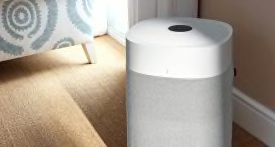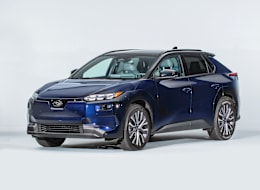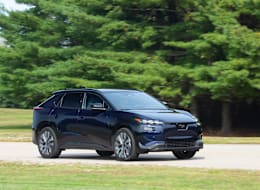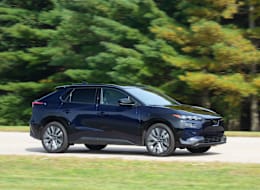Introduction
2026 Subaru Solterra EV Gets a Major Freshening to Catch Up to the CompetitionIncreased range, more power, a standard NACS port, and faster charging come at about the same price as last year’s model
Overview
Subaru and Toyota are about to enter the fourth model year of their joint electric vehicle project, and to celebrate, they’ve made some big changes to deliver a more competitive EV. The 2026 Subaru Solterra (and similar Toyota BZ) features a standard NACS (North American Charging System) Tesla-style charge port, more power from new motors, faster charging speeds for the slightly larger battery, and under-the-skin improvements to reduce noise and improve ride and handling. The changes are much-needed, as the prior Solterra suffered from slow charging and an uncompetitive range.
There are fewer trim options available for 2026, and Subaru has kept any price increases relatively small—it even dropped the price on one trim. This is likely a response to the end of federal tax credits on EVs and a corresponding drop in demand.
The MSRP on the Premium trim, before adding options, remains $38,495, unchanged from 2025, while the Limited, at $41,395, costs $600 less. Both trims have two motors that combine to produce 233 hp, an increase of 18 hp over the 2025 version.
The Touring trim has been discontinued, and in its place is a Limited XT that costs $42,895—$2,100 less than the trim it replaced. At the top of the trim list is a new Touring XT, the version that Subaru lent to Consumer Reports for this evaluation, which has a base price of $45,555. The two XT versions use the 338-hp dual-motor setup. Subaru says this powertrain makes the Limited XT trim quicker from 0 to 60 mph than a Subaru WRX STI sports sedan.
In 2026, a larger version of the Solterra, the Trailseeker, will arrive. It’s over 6 inches longer and nearly an inch taller than the Solterra and has 8.3 inches of ground clearance. It’s built on the updated platform that the Solterra rides on and is supposed to produce 375 hp from its two electric motors.
We drove the 2026 Subaru Solterra Touring XT with 338-hp, dual electric motors; 74.7-kilowatt-hour battery; and all-wheel drive to gain early experience with this freshened model that Subaru lent to Consumer Reports.























